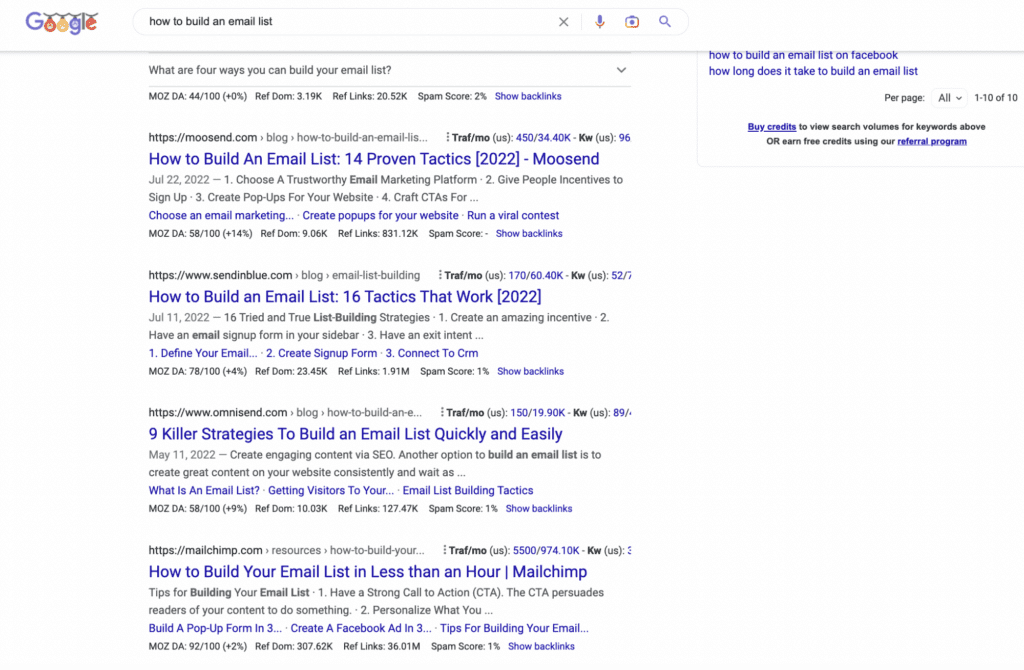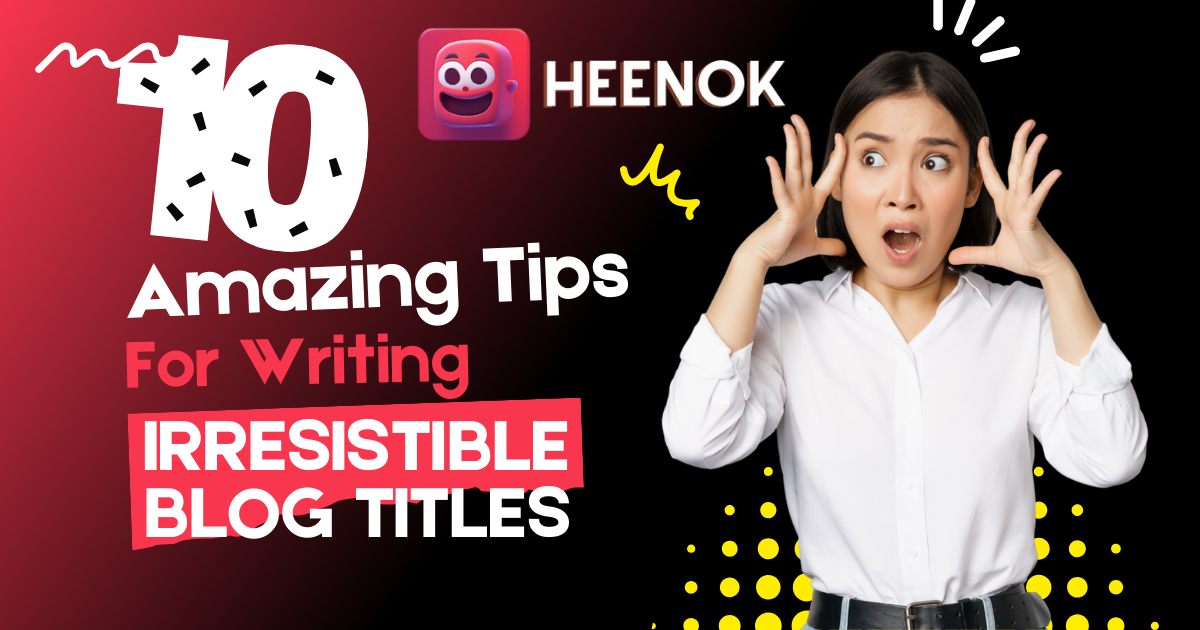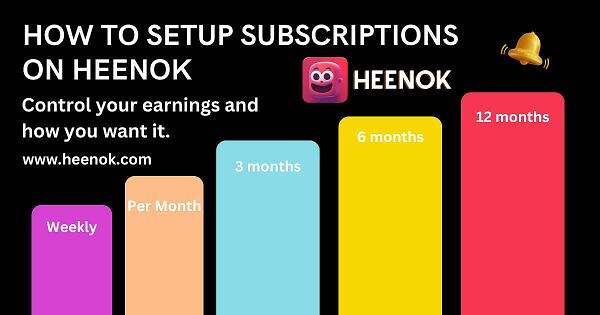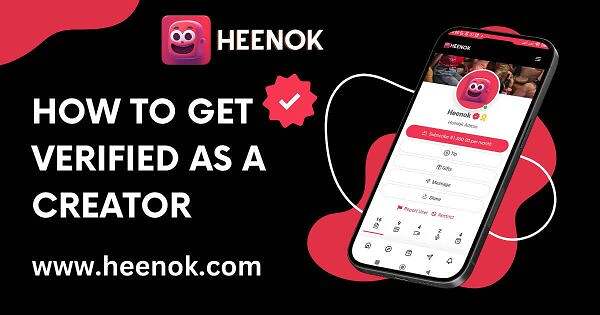1. Introduction
Writing a compelling blog title can be a very complex task as blog titles are very important in the writing process because they serve as the first point of contact between your content and potential readers. A compelling title can make the difference between someone choosing to read your blog post or scrolling past it. In the vast sea of online content, your title acts as a beacon, drawing readers’ attention and inviting them to dive into your work.
Creating an effective title can also help writers stay organized and maintain clarity. A well-thought-out title gives a clear indication of what the post will cover, which helps in structuring the content logically. When you craft a precise and relevant title, it serves as a guiding star for your writing, ensuring that you stay on topic and deliver the promised information or insights. This not only enhances the readability of your post but also ensures that your message is conveyed effectively.
A well-structured title serves as a roadmap for both the writer and the reader. For writers, it outlines the scope and direction of the blog post, making the writing process more focused and efficient. For readers, a clear and engaging title sets expectations and provides a glimpse into the content they are about to explore. It helps them decide whether the post is relevant to their interests or needs. In essence, a great title bridges the gap between the writer’s intention and the reader’s curiosity, leading to a more satisfying and engaging reading experience.
2. Identifying Your Purpose
Before you start writing, it’s very important to identify the primary purpose of your blog post in order not to make it lose quality. Understanding your goal will help you craft a title that aligns with your content and resonates with your audience. Consider whether your intention is to:
- Inform: Are you providing valuable information or insights? Examples include tutorials, guides, and news updates.
- Persuade: Are you trying to convince your readers of a particular viewpoint or encourage them to take a specific action? Examples include opinion pieces, product reviews, and calls to action.
- Entertain: Are you aiming to amuse or engage your audience through storytelling, humor, or interesting anecdotes? Examples include personal stories, entertainment news, and humorous lists.
- Provoke Thought: Are you challenging your readers to think critically or consider new perspectives? Examples include in-depth analyses, philosophical musings, and controversial topics.
Once you’ve identified the purpose, clarify the main message or thesis statement of your blog post. This core idea should be clearly reflected in your title with a sense of human touch, as it sets the stage for your content and ensures that your readers know what to expect. Ask yourself:
- What is the primary takeaway you want your readers to remember?
- What unique angle or insight are you offering on the topic?
- How does your content stand out from other similar posts?
By pinpointing your main message, you can create a title that not only captures attention but also accurately represents the essence of your blog post. This clarity will guide your writing and help you stay focused on delivering value to your readers.
3. Audience Consideration
Understanding your target audience is essential for creating content that resonates with them. Your audience’s interests, needs, and pain points shape the topics you cover, the tone you use, and the solutions you provide. By knowing who you’re writing for, you can tailor your content to meet their expectations and establish a stronger connection with them based on their Interests, Needs, and Pain Points:
- Interests: What topics or subjects are your audience passionate about? Consider their hobbies, professions, or areas of expertise. Understanding their interests helps you choose relevant and engaging topics that capture their attention.
- Needs: What problems or challenges are your audience facing? By identifying their needs, you can create content that offers solutions, answers questions, or provides valuable insights. Addressing their needs positions you as a helpful resource and builds trust with your audience.
- Pain Points: What frustrations or concerns are keeping your audience up at night? Pinpointing their pain points allows you to empathize with their struggles and offer support or advice. Your content can provide guidance, encouragement, or simply a sense of understanding that resonates with their experiences.
As you craft your outline, keep your audience’s interests, needs, and pain points top of mind by considering the following:
- Topic Selection: Choose topics that are relevant and meaningful to your audience. What information or insights are they seeking? What questions do they need answered?
- Content Structure: Organize your outline in a way that addresses your audience’s concerns or questions. Consider their perspective and what sequence of information would be most helpful to them.
- Tone and Language: Adapt your tone and language to match the preferences of your audience. Are they looking for a casual, conversational style, or do they prefer a more formal approach? Tailoring your tone ensures that your content resonates with your audience on a deeper level.
By considering your audience throughout the outlining process, you can create a blog title that not only captures their attention but also delivers genuine value and fosters a sense of connection and engagement.
4. Choosing a Structure
In crafting your blog post, the choice of structure plays a pivotal role in shaping how your content is presented to your audience. Each structural format brings its own set of advantages and can effectively serve different objectives. Let’s explore some popular structural formats:
- Listicles: This offers a concise and organized way to present information. Whether it’s “Top 10 Tips” or “5 Ways to…”, this format breaks down content into easily digestible points, making it ideal for capturing readers’ attention with numbered lists.
- How-Tos: This on the other hand, provides step-by-step instructions or tutorials on a particular topic. This format is invaluable for guiding your audience through processes or teaching them new skills in a clear and actionable manner.
- Narratives: Weave a story to engage readers emotionally and create a personal connection. By sharing experiences or insights in a storytelling format, you can effectively convey complex ideas or evoke powerful emotions.
- Problem-Solution Frameworks: Identify common challenges or issues faced by your audience and offer practical solutions. This format not only addresses your readers’ pain points but also establishes your authority in your niche by providing valuable advice.

When selecting the right structure for your blog post, it’s important to consider various factors. Firstly, think about the type of content you’re sharing and how it can be best presented. Tailor your choice of structure to align with your objectives — whether you aim to educate, entertain, inspire, or persuade your audience. Additionally, take into account your audience’s preferences and expectations. By choosing a structure that resonates with your audience and supports your blogging goals, you can effectively communicate your message and maximize reader engagement.
5. Key Sections and Subtopics
Breaking down your blog post into key sections and subtopics is essential for maintaining clarity and coherence. Each section should support your main message and contribute to the overall flow of your post. Here’s how you can organize your content effectively:
Introduction:
- Hook: Start with an engaging opening that grabs the reader’s attention.
- Thesis Statement: Clearly state the main message or purpose of your blog post.
- Overview: Provide a brief overview of the key sections and subtopics you’ll cover.
Section 1: Understanding the Importance of Titles
- The Role of Titles: Discuss why titles are crucial in the writing process.
- First Impressions: Explain how titles are often the first point of contact between your content and potential readers.
- Capturing Attention: Highlight the impact of a compelling title on attracting readers.
Section 2: Identifying Your Purpose
- Purpose Clarification: Identify whether your blog post aims to inform, persuade, entertain, or provoke thought.
- Main Message: Clarify the core idea or thesis statement of your post.
- Audience Takeaway: Explain what you want your readers to take away from your post.
Section 3: Audience Consideration
- Understanding Your Audience: Discuss the importance of knowing your target audience.
- Interests: Identify what topics or subjects your audience is passionate about.
- Needs: Highlight the problems or challenges your audience faces.
- Pain Points: Understand the frustrations or concerns of your audience.
Section 4: Choosing a Structure
- Exploring Formats: Discuss different structural formats such as listicles, how-tos, narratives, and problem-solution frameworks.
- Content Suitability: Explain how to choose a structure that best suits your content.
- Aligning with Objectives: Emphasize the importance of selecting a structure that aligns with your blogging goals.
Section 5: Key Sections and Subtopics
- Organizing Content: Break down your blog post into key sections and subtopics.
- Main Points: Outline the main points you’ll cover within each section using bullet points or numbered lists:
-
- Introduction
- Understanding the Importance of Titles
- Identifying Your Purpose
- Audience Consideration
- Choosing a Structure
- Key Sections and Subtopics
- Crafting Engaging Headlines and Subheadings
- Incorporating Visual Elements
- Maintaining Flow and Transitions
- Reviewing and Revising
- Conclusion and Call to Action
Section 6: Crafting Engaging Headlines and Subheadings
- Importance of Headlines: Highlight the role of headlines and subheadings in guiding readers.
- Tips for Headlines: Offer tips for creating compelling headlines, such as using strong verbs or posing questions.
Section 7: Incorporating Visual Elements
- Role of Visuals: Discuss how images, infographics, and videos enhance readability and appeal.
- Placement: Plan where to incorporate visual elements within your outline.
Section 8: Maintaining Flow and Transitions
- Ensuring Coherence: Emphasize the importance of smooth transitions between sections.
- Transitional Phrases: Use linking words to connect ideas and maintain flow.
Section 9: Reviewing and Revising
- Importance of Review: Stress the importance of revising your outline before writing.
- Flexibility: Encourage writers to be open to adjusting their outlines as needed.
Conclusion and Call to Action:
- Summarize Key Points: Recap the main takeaways from your blog post.
- Call to Action: Prompt readers to engage further, whether by commenting, sharing, or exploring related content.
By breaking down your blog post into these key sections and subtopics, you can create a structured and coherent piece that effectively communicates your message and engages your readers.
6. Creating Engaging Headlines and Subheadings
Headlines and subheadings play a very important role in the success of your blog post. They are often the first elements readers see, and they can significantly influence whether someone decides to read your content. An attention-grabbing headline entices readers by promising value, sparking curiosity, or addressing a specific need. Subheadings, on the other hand, break your content into manageable sections, guiding readers through your post and making it easier to digest.
Effective headlines and subheadings not only capture attention but also provide clarity about the content that follows. They give readers a clear idea of what to expect, helping them quickly determine if your post meets their needs or interests. By investing time in crafting compelling headlines and subheadings, you can increase engagement, reduce bounce rates, and enhance the overall readability of your blog. Checkout the following tips for creating compelling headlines:
- Use Strong Verbs: Strong, action-oriented verbs make your headlines more dynamic and engaging. For example, “Transform Your Writing Skills with These 10 Tips” is more compelling than “Writing Skills Tips.”
- Pose Questions: Questions pique curiosity and encourage readers to seek answers in your content. For example, “Are You Making These Common Blogging Mistakes?” invites readers to find out if they might be at fault.
- Promise Valuable Insights: Headlines that promise specific benefits or insights can attract readers looking for solutions. For example, “Discover How to Triple Your Blog Traffic in 30 Days” offers a clear, valuable outcome.
- Incorporate Numbers and Lists: Numbers and lists make your content appear organized and easy to read. For example, “7 Proven Strategies to Improve SEO” signals a structured, actionable post.
- Create a Sense of Urgency or Scarcity: Urgency or scarcity can drive readers to act quickly. For example, “Last Chance to Get Our Free Blogging Guide” or “Why You Need to Update Your Content Strategy Today.”
- Use Emotional Triggers: Emotionally charged words can create a stronger connection with readers. For example, “The Heartwarming Story of a Community Coming Together” appeals to readers’ emotions.
- Be Clear and Specific: Clarity is key. Ensure your headline accurately reflects the content of your post. For example, “How to Create an Effective Content Calendar” clearly tells readers what they will learn.
- Keep It Concise: Aim for headlines that are concise and to the point. A good rule of thumb is to keep them under 70 characters so they are fully visible in search results.
By following these tips, you can craft headlines and subheadings that not only capture your readers’ attention but also guide them through your content, making your blog posts more engaging and effective.
7. Incorporating Visual Elements
Incorporating visual elements into your blog post is crucial for enhancing both its readability and appeal. Visuals serve as powerful tools for breaking up dense blocks of text, making your content more visually appealing and easier to digest. By strategically integrating images, infographics, videos, and other multimedia elements, you can effectively illustrate your points and convey complex information in a more accessible manner. Additionally, visual elements cater to different learning styles, appealing to both visual and auditory learners, thereby maximizing the effectiveness of your content in reaching a wider audience.

When planning where to incorporate visual elements within your blog post outline, it’s essential to consider the role each visual will play in supporting your content. For instance, you might choose to include an attention-grabbing image or video at the beginning of your post to capture readers’ interest and set the tone for the rest of the content. Throughout your post, strategically place relevant images, infographics, or charts to complement and illustrate your main points. This not only enhances comprehension but also adds visual interest to your post, keeping readers engaged and motivated to continue reading.
In step-by-step guides or tutorials, incorporating screenshots or instructional videos can provide readers with clear visual instructions, making it easier for them to follow along and implement the advice you’re offering. Additionally, consider using visual elements to highlight key quotes or takeaways, breaking up the text and drawing attention to important insights. As you conclude your post, summarize the main points with a visual recap, such as an infographic or a short video, leaving a lasting impression on your readers.
Ultimately, integrating visual elements into your blog post not only enhances its aesthetic appeal but also improves its shareability and overall effectiveness. Visuals have the power to elevate your content, making it more engaging, memorable, and impactful for your audience. By carefully planning where to incorporate visuals within your outline and selecting the most relevant and compelling visuals for each section, you can create a blog post that captures readers’ attention, delivers valuable information, and leaves a lasting impression.
8. Maintaining Flow and Transitions
Maintaining the flow of your content is crucial for ensuring that your readers can follow along effortlessly and stay engaged throughout your blog post. A well-organized and logically structured post guides readers seamlessly from one idea to the next, making it easier for them to understand and retain the information you’re presenting.
To achieve smooth transitions, it’s important to plan how each section of your post will connect to the next. Think of your blog post as a journey where each section is a stepping stone leading to the next. When outlining your post, ensure that each section builds upon the previous one and logically leads to the next. This will help create a cohesive narrative that keeps readers engaged and interested.
Transitional phrases and linking words are essential tools for maintaining coherence and flow in your writing. These phrases help bridge the gap between different sections and ideas, ensuring that your content flows naturally. Here are some tips on how to use them effectively:
- To Introduce a New Idea: Use phrases like “Additionally,” “Moreover,” or “Furthermore” to add new points. Example: “Moreover, incorporating visuals can significantly enhance the appeal of your content.”
- To Contrast Ideas: Use phrases like “However,” “On the other hand,” or “In contrast” to present opposing viewpoints or differences. Example: “However, it’s important to balance visuals with text to avoid overwhelming your readers.”
- To Show Cause and Effect: Use phrases like “Therefore,” “As a result,” or “Consequently” to explain the consequences of a previous point. Example: “As a result, well-placed images can improve the readability of your post.”
- To Summarize or Conclude: Use phrases like “In summary,” “To conclude,” or “Ultimately” to wrap up your points. Example: “In summary, smooth transitions and clear structure are key to an engaging blog post.”
- To Add Examples: Use phrases like “For instance,” “For example,” or “Such as” to provide examples that illustrate your points. Example: “For instance, using a chart to display data can make it more comprehensible.”
By carefully incorporating these transitional phrases and linking words, you can ensure that your blog post maintains a logical and coherent flow. This not only helps in guiding your readers through your content but also enhances their overall reading experience, making them more likely to stay engaged and absorb the information you are presenting.
9. Reviewing and Revising
Before diving into the writing process, it is crucial to review and revise your outline thoroughly. A well-structured outline serves as the backbone of your blog post, ensuring that your main points are effectively captured and logically presented. By taking the time to review your outline, you can identify any gaps or weaknesses in the flow of your content. This step allows you to refine your ideas and ensure that each section supports your overall thesis and objectives.
Revising your outline helps you to streamline your thoughts, making the writing process more efficient and focused. It also reduces the likelihood of encountering major structural issues later on, which can be more challenging to address once the writing is underway. By investing time in this preparatory phase, you set a strong foundation for a cohesive and compelling blog post.
While a solid outline is essential, it’s equally important to remain flexible and open to adjustments during the drafting phase. Writing is a dynamic process, and as you develop your ideas, you may find that certain points need to be expanded, condensed, or repositioned for better clarity and impact.
Encourage writers to view their outlines as living documents rather than rigid templates. Be prepared to revisit and tweak your outline as new insights emerge or as you discover more effective ways to convey your message. This adaptability can lead to a more polished and well-rounded final piece.
For example, as you draft, you might realize that a particular section needs more evidence or that a point you initially thought was minor deserves more emphasis. Being open to these changes allows you to refine your content continually, enhancing its overall quality. Checkout the following key Steps in Reviewing and Revising Your Outline:
- Check for Logical Flow: Ensure that each section follows a logical progression, building on the previous points and leading naturally to the next. Example: Confirm that your discussion of audience needs flows smoothly into how to tailor your content to meet those needs.
- Ensure Coverage of Main Points: Verify that all your main points are included and adequately supported with subpoints or evidence. Example: Make sure your section on crafting headlines includes tips and examples.
- Identify and Fill Gaps: Look for any missing information or sections that need further development. Example: If you notice a lack of visual elements in your outline, plan where these could be effectively incorporated.
- Revise for Clarity and Conciseness: Simplify complex ideas and ensure that each point is clearly articulated. Example: Refine your thesis statement to make it more direct and impactful.
- Seek Feedback: If possible, get feedback from peers or colleagues to identify any areas of confusion or improvement. Example: Ask a colleague to review your outline for logical consistency and clarity.
By reviewing and revising your outline with these steps, you can ensure that your blog post is well-organized, coherent, and engaging from the outset. This preparatory work not only streamlines the writing process but also enhances the overall quality and effectiveness of your final piece.
10. Conclusion and Call to Action
In crafting a compelling blog post, it is essential to start with a clear purpose and understanding of your audience. By identifying your primary message and tailoring your content to address the needs and interests of your readers, you create a strong foundation for engagement. Choosing the right structure, whether it’s a listicle, how-to, narrative, or problem-solution format, helps organize your thoughts and makes your content more accessible. Incorporating engaging headlines and subheadings, along with visual elements like images, infographics, and videos, further enhances readability and appeal.
Maintaining the flow of your content through smooth transitions and linking phrases ensures that your readers can follow your argument effortlessly. Finally, reviewing and revising your outline before diving into the writing process, and remaining flexible to make adjustments as needed, allows for a polished and cohesive final product.
As you conclude your blog post, invite your readers to engage further with your content. A compelling call to action (CTA) not only wraps up your post effectively but also encourages readers to take the next step. Whether it’s by leaving a comment, sharing your post on social media, or exploring related topics on your blog, a strong CTA helps foster interaction and build a community around your content. An example is below:
“Thank you for reading! If you found these tips helpful, please share this post with your network and leave a comment below with your thoughts or any additional tips you’d like to share. Don’t forget to explore our related articles on content creation and blogging strategies to continue enhancing your skills.”











